I'm trying to build a pure sine wave inverter in LTspice but I'm having some trouble.
This is a test circuit, the voltage source outputs an SPWM signal which becomes a perfect sinewave after passing through the LC filter.
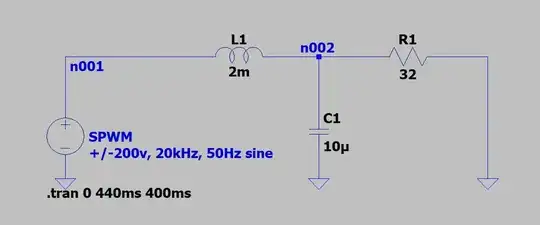 Waveforms:
Waveforms:
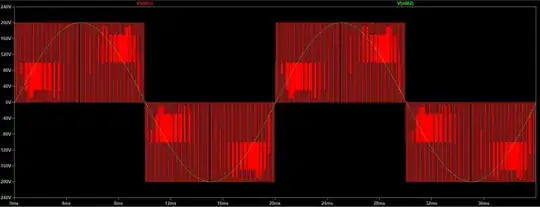
In this circuit, the SPWM source is replaced by 2 200VDC sources and a half-bridge. These are the MOSFETs used in this simulation: TK065U65Z
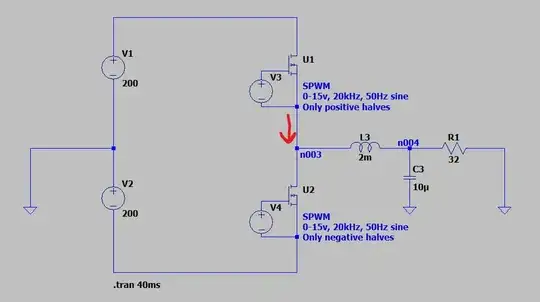
I would expect the output of the half-bridge to look like V(n001) from the previous circuit, but it doesn't at all. It oscillates between +200v and -200v throughout the whole period and zooming in shows some higher frequency (~111kHz) ringing. The filtered output doesn't look like the nice sinewave I was hoping for either.
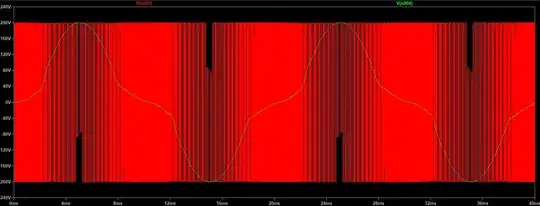
This is what the voltage across V3, the high-side MOSFET gate driver, looks like. V4 is the same but 180° out of phase.
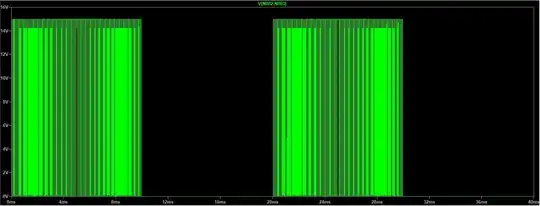
Lastly, here's the current coming from the high-side MOSFET (red arrow on the circuit), which contains huge spikes.
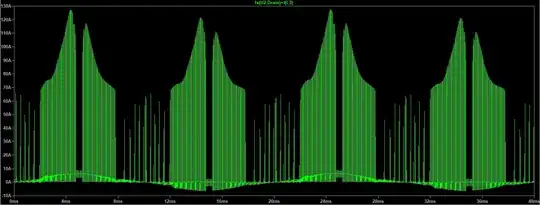
My question is:
Why does the half-bridge output not look like the test circuit (why does it continuously oscillate between + and - 200V and why is it ringing)? And what can I do to fix it?
I'm thinking it has something to do with the first circuit actually pulling the output to 0V as opposed to the half-bridge just going high impedance.
You can download all files necessary to run the simulation here.
These are the results of Andy's answer:
V3 and V4 output the same waveforms as the previous schematic.
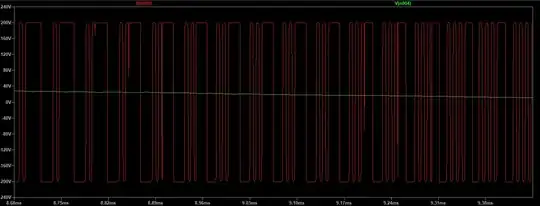
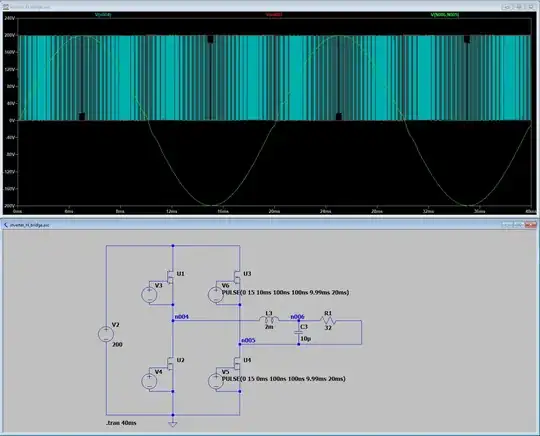
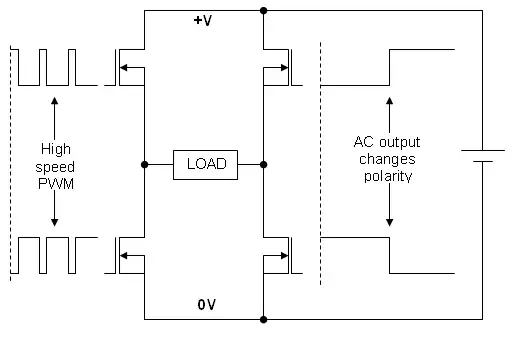
triseandtfallin the voltage sources (and, if so, that will not achieve what you expect, because zero rise or fall time is a physical impossibility, and LTspice deals with that by setting 10% ofmin(Ton,T-Ton); there's no need to exaggerate, though, they can be set to about 100x...1000x smaller than T). – a concerned citizen Dec 04 '21 at 08:11roff=10Meg). I'm not sure what you mean, my Python script works by comparing a sawtooth function with amax(0, sine(x))function for the positive half and a-min(0, sine(x))function for the negative half, it outputs these as 2 separate files. – Cedric Dec 04 '21 at 12:26As for the SPWM generation, I used to do it with a comparator ("Image 1" in this question) but that was quite slow so I switched to using PWL. Your solution with a Schmitt gate is probably much faster than using a comparator and has the advantage of having everything in LTspice.
– Cedric Dec 04 '21 at 16:57